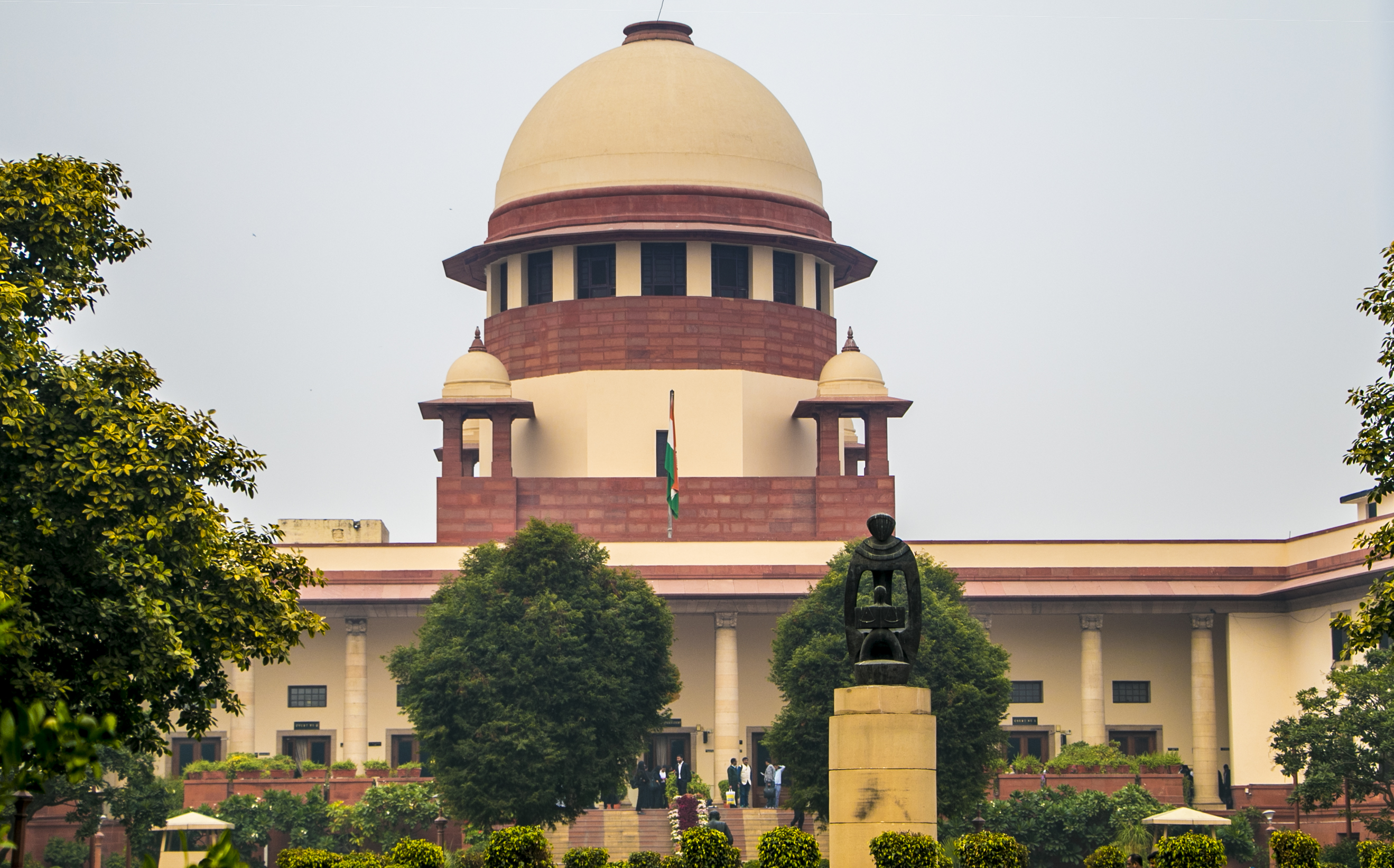In CIVIL APPEAL NO. 4648 OF 2022 – SC – Multiplier method most realistic for calculating compensation for road accident victims, says Supreme Court while enhancing compensation for disability awarded by MACT & then HC Justices Indira Banerjee & J K Maheshwari [06-07-2022]

Read Order: ABHIMANYU PARTAP SINGH v. NAMITA SEKHON & ANOTHER
Mansimran Kaur
New Delhi, July 9, 2022: For determination of compensation, the multiplier method should be adopted as it is the most realistic and reasonable method that considers relevant parameters such as age, inflation rate, uncertainty of life and other realistic needs while computing compensation,the Supreme Court has reiterated.
A Division bench of Justice Indira Banerjee and Justice J.K. Maheshwari allowed the instant appeal directed against the judgment dated May 21, 2019 passed by the Single Judge of the High Court of Punjab and Haryana in the first appeal order preferred by the claimant, whereby the said appeal was partly allowed and the compensation granted to the tune of Rs. 9,00,000/- by the Motor Accident Claims Tribunal was enhanced to Rs. 23, 20,000/-. The Top Court has enhanced the compensation to Rs 28,42,000/-.
The Bench was of the opinion that the disability suffered by the claimant is for whole life and in the said fact, the Court was of the considerate view that the future loss of earning calculated by the High Court only for 10 years was not justified. The Bench observed that for determination of just compensation to ensure justice with the family of deceased or the injured, as the case may be, the compensation shall be determined by applying the multiplier method.
The claimant filed a claim petition under Section 166 of the Motor Vehicles Act, 1988 asking for compensation to the tune of Rs. 20,00,00,00/- in various heads on account of permanent disability caused to him in a road accident that occurred on 10.11.1996, for which an FIR was lodged on 11.11.1996.
The petition said that on account of head injuries including the fracture in temporal bone, the development and capacity of the brain was not comparable to a common man. Due to injuries in lower limbs, he lost the senses for calls of nature and needs attendants all the time for his daily routine work. He was not able to move without a wheelchair or motorized vehicle, thus his future was in complete jeopardy, the plea argued.
The Motor Accident Claims Tribunal (MACT) while deciding the claim petition recorded the finding of a joint and several liabilities and the claimant suffered 100 percent disability.
The Tribunal calculated the compensation by applying the multiplier of 16 and awarded Rs.1,92,000/- in the head of attendant charges @ Rs.1,000/- per month, for physiotherapy Rs.2,88,000/- @ Rs.50 per day, Rs.15,000/- has been awarded in transportation charges, and Rs.5,000/- for use of diapers in future.
The adequacy of the grant compensation was assailed by the claimant by filing an appeal before the High Court which was allowed through the order dated May 21, 2019.
In pursuance of the same, the Court awarded Rs.1,00,000/- for the motorised wheelchair. The future loss of earning is awarded to the tune of Rs.6,00,000/- accepting the loss of Rs.60,000/- per annum for 10 years only. The attendant charges as granted by the claims Tribunal is enhanced to the tune of Rs.7,08,000/- @ Rs.3,500/- per month only for 20 years. Under the head of medicines, physiotherapy and diapers the High Court awarded Rs.8,00,000/- in lump sum enhancing the amount as allowed by the MACT.
In the face of loss of amenities of life, marital bliss Rs.3,00,000/- was allowed and Rs.1,00,000/- for the special diet enhancing the total amount of compensation to the tune of Rs.23,20,000/-. The High Court further directed to pay interest on the enhanced amount @ 7.25% p.a. from the date of filing of Claim Petition till its payment.
The present appeal questioned the inadequacy of grant of compensation by MACT and also by the High Court. By pursuing the said appeal, the claimant was seeking enhancement of the compensation by application of the just and reasonable theory, as looking at the nature of permanent disability, the profession in which the claimant was involved in called for compensation under both the heads — pecuniary as well as in non- pecuniary.
After hearing the submissions of the parties, the Supreme Court observed that there was no iota of doubt in the fact that the claimant suffered 100% permanent disability in a road accident and the liability is joint and several. For comprehending the nature of injuries and its extent, the statement of the prosecution witness Dr. Sunil Katoch, Consultant at the Indian Spinal Injuries Centre, Delhi was taken into consideration.
As per his testimony, the claimant suffered the spinal injury at level C-7, C-8 with complete bowel and bladder paralysis and is unable to use his upper limbs (hands) with full strength. MRI suggests extensive myelomalacia of the spinal cord from C-7 to D-4 level, to which optimized domiciliary care was required. Due to spinal injury, he suffered complete paralysis of both lower limbs and partial involvement of hands along with bowel and bladder. In consequence, he may suffer urinary complications throughout his life to which adequate medical attention was required, the Court submitted.
He could not pursue a regular career having embarrassing situations. The percentage of permanent disability is 100%. With the said medical opinion and the findings, the issue of adequacy and to grant the just and reasonable amount of compensation requires consideration, the Court further noted.
In view of the same, the Court observed that the compensation towards wrongful act in terms of money though cannot be decided by the Court but it may be determined as per the recognized principles. At this stage reliance was placed on the case of R.D. Hattangadi vs. Pest Control (India) (P) Ltd, wherein this Court stated that while determining the compensation for physical injuries, the heads on which the amount of compensation is to be determined, may be of two types, one is of pecuniary damages and another is of non- pecuniary damages. Similar findings were observed in the case of Raj Kumar vs. Ajay Kumar and another.
It was further noted by the Top Court thatfor determination of just compensation multiplier method should have been adopted as the same has been recognized as most realistic and reasonable because it has been decided looking at the age, inflation rate, uncertainty of life and other realistic needs.
“Thus, for determination of just compensation to ensure justice with the family of deceased or the injured as the case may be the compensation can be determined by applying said method,” the Bench said.
At this stage reliance was placed on the case of Kajal vs. Jagdish Chand and others, as the multiplier of 18 was made applicable in the instant case for determination of the compensation.
Therefore, in the view of the Top Court, the Tribunal granting the compensation of future loss as well as earning only for 10 years and attendant charges only for 20 years was not justified, the Court remarked.
In addition to the same, the Apex Court also took into consideration the determination of non- pecuniary loss that amounts to mental and physical pain and sufferings present and in future, loss of amenities of life including loss of marital bliss, loss of expectancy in life, inconvenience, hardship, discomfort, disappointment, frustration, mental agony in life etc.
On perusal of the record out of the pecuniary heads MACT has not awarded any amount in future loss of earning even having 100% permanent disability while the High Court granted Rs.6,00,000/- only for 10 years because the appellant is now practicing as an advocate in the Court accepting his earning Rs.60,000/- per annum, the Court noted.
In respect of the same, the Court opined that the capacity of the claimant being an advocate cannot be equated with other practicing advocates having no deformity in the same profession. The claimant is required to make extraordinary efforts to attend the proceedings in the Court and to come up to the expectations of the client, the Court further noted.
The disability suffered by the claimant was for whole life and in the said fact, the Court was of the considerate view that the future loss of earning calculated by the High Court only for 10 years was not justified.
If the future loss of earning Rs.5,000/- per month as decided by the High Court which annually comes to Rs.60,000/- , the Court deemed it necessary to apply the the multiplier method and by applying the same the sum amounted to Rs.10,80,000/-, in the said head, the Court submitted.
Thus, considering the facts and circumstances of the case and nature of injuries, the Court was of the considerate opinion, that the appellant was entitled for a sum of Rs.4, 00,000/- in the head of loss of amenities of life and marital bliss, pain and sufferings, loss of enjoyment and loss of expectancy, Rs.1, 00,000/- as awarded by the High Court was maintained in the head of special diet. Further in the non-pecuniary heads, the compensation as determined comes to Rs.5, 00,000/-, the Court observed. The total enhanced amount amounted to Rs.28, 42,000/-, the Court stated.
In light of the aforesaid observations, the Top Court allowed the instant appeal. It was further stated by the Court that the enhance amount shall carry interest at the rate of 6.5 %p.a., from the date of filing of the claim petition till its realization.
Sign up for our weekly newsletter to stay up to date on our product, events featured blog, special offer and all of the exciting things that take place here at Legitquest.




Add a Comment